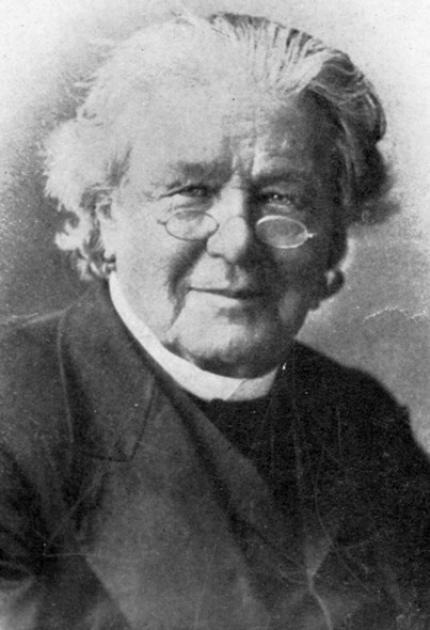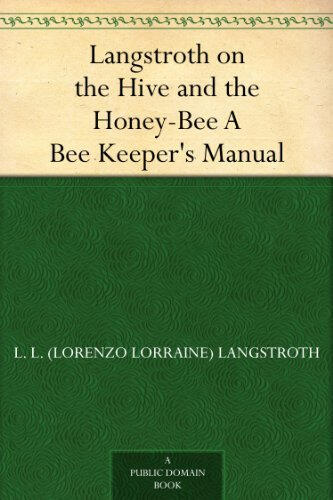
L. L. Langstroth
Small-scale beekeeping & honey production in rural South Carolina honoring Lorenzo Lorraine Langstroth.
The Queen’s Bees
Have Been Informed of
Her Passing
About

Rev. Lorenzo Lorraine Langstroth (December 25, 1810 – October 6, 1895) was an American apiarist, clergyman, and teacher, and considered to be the father of American beekeeping. He created the modern-day Langstroth hive.
Langstroth was popularly credited with discovering the “bee space,” though this discovery had already been implemented in European hives. In Europe, both Jan Dzierżon and August von Berlepsch had been focused on side-opened hives. Land resources in Europe had been limited, and bees were traditionally kept in beehouses. The presently so-called “bee space” had been incorporated by Berlepsch following Dzierzon’s discoveries, from the years 1835–1848, into his frame arrangement (Bienen-Zeitung, May 1852). Langstroth made many other discoveries in beekeeping and contributed greatly to the industrialization of modern beekeeping.


Langstroth revolutionized the beekeeping industry by using bee space in his top-opening hive. In the summer of 1851, he found that by leaving an even, approximately bee-sized space between the top of the frames holding the honeycomb and the flat coverboard above, he was able to remove the coverboard quite easily, which was normally well-cemented to the frames with propolis, and made separation difficult. Langstroth later used this discovery to make the frames themselves easily removable. If a small space was left (less than 1/4 inch or 6.4 mm), the bees filled it with propolis; conversely, when a larger space was left (more than 3/8 inch or 9.5 mm), the bees filled it with comb.
On 5 October 1852, Langstroth received a patent on the first movable frame beehive in America. A Philadelphia cabinetmaker and fellow bee enthusiast, Henry Bourquin, made Langstroth’s first hives for him. By 1852, Langstroth had more than a hundred of these hives, and began selling them where he could. Langstroth spent many years attempting to defend his patent without success. He never earned any royalties, because the patent was easily and widely infringed. Langstroth hives are still in common use today. He wrote that “… the chief peculiarity in my hive was the facility with which they could be removed without enraging the bees …. I could dispense with natural swarming, and yet multiply colonies with greater rapidity and certainty than by the common methods …. feeble colonies could be strengthened, and those which had lost their queen furnished with the means of obtaining another. …. If I suspected that anything was wrong with a hive, I could quickly ascertain its true condition and apply the proper remedies.”


Langstroth also found that several communicating hive boxes can be stacked one above another and that the queen can be confined to the lowest (or brood) chamber, by means of a queen excluder. In this way, the upper chambers can be reached only by the workers, and therefore contain only honey-comb. This made hive inspection and many other management practices possible, and turned the art of beekeeping into a full-scale industry. At the time of Langstroth’s contributions, honey was the chief sweetener in American diets, so Langstroth’s new beekeeping techniques were of great importance. His discoveries and inventions allowed beekeeping to be done more cost-effectively on a large scale. Since four to twelve pounds of honey—in addition to many hours of bee time—are consumed by bees in the production of one pound of beeswax, honey production was increased from reuse of the comb.
Contact Us
Gallery
Resources
Books Published by L. L. Langstroth

Langstroth on the Hive and the Honey-Bee
A Bee Keeper's Manual
The Hive and the Honey-Bee

Langstroth on the Hive and the Honey-Bee,
A Bee Keeper's Manual: The Original 1853 Edition
Langstroth's Hive and the Honey-Bee:
The Original Bee-keeper's Manual
Langstroth's Hive and the Honey-Bee:
The Classic Beekeeper's Manual
Langstroth on the Hive and The Honeybee;
The Classic Beekeepers Manual (Illustrated)
Hive and Honey Bee
Websites
Wikimedia Commons
https://www.invent.org/inductees/lorenzo-l-langstrothHall of Fame
https://www.invent.org/inductees/lorenzo-l-langstrothThe Moveable-frame Hive Lorenzo Langstroth (PDF)
http://faculty.msj.edu/kritskg/bees/poster.pdfIn Honor of Lorenzo Lorraine Langstroth
https://www.bluetoad.com/publication/?i=52809&article_id=553787&view=articleBrowser&ver=html5Langstroth and His Bees English Department of Miami University of Ohio
https://lorenzolangstroth.wordpress.com/Lorenzo L. Langstroth Historical Marker (Philadelphia)
https://explorepahistory.com/hmarker.php?markerId=1-A-3FELorenzo L. Langstroth Historical Marker (Pennsylvania)
https://pafoodways.omeka.net/exhibits/show/pennsylvania-historical-marker/marking-time/lorenzo-langstrothLuminaries of Dayton: Lorenzo Lorraine Langstroth
https://dayton937.com/the-featured-articles/luminaries-of-dayton-lorenzo-lorraine-langstroth.html
Videos








